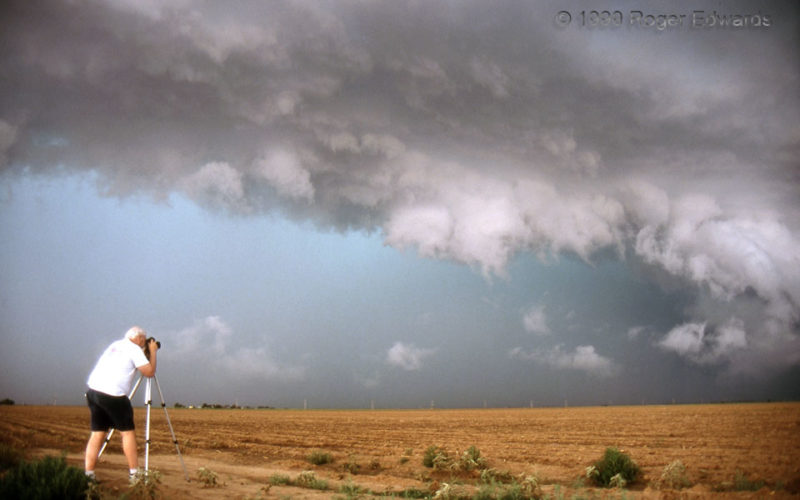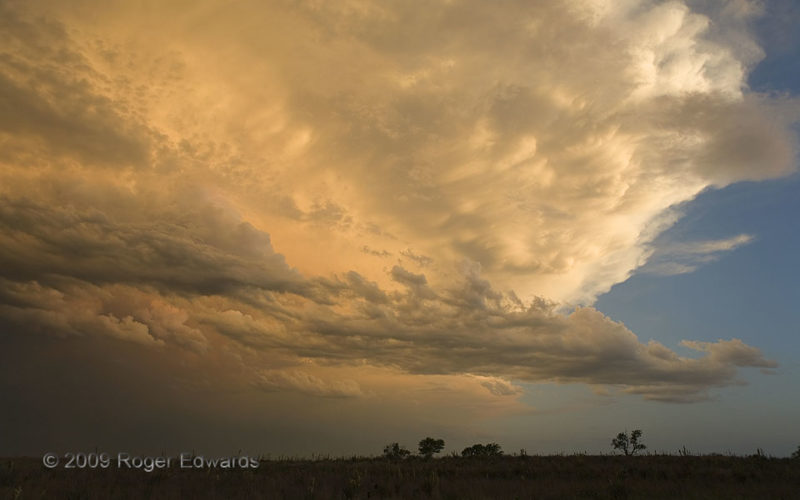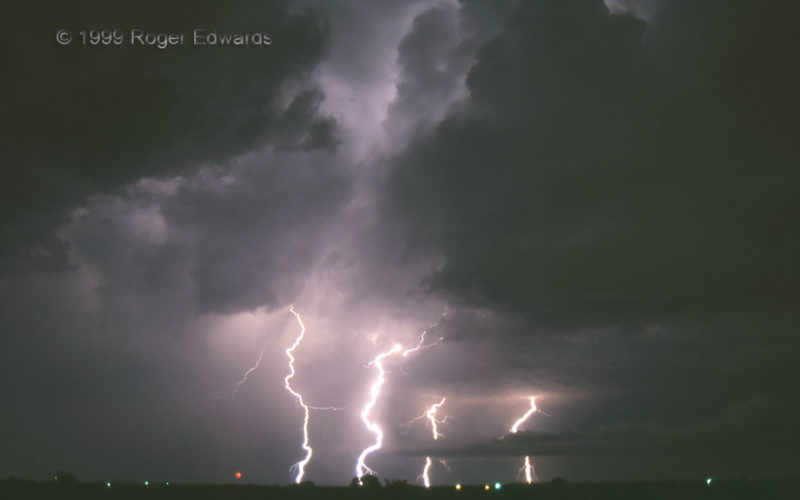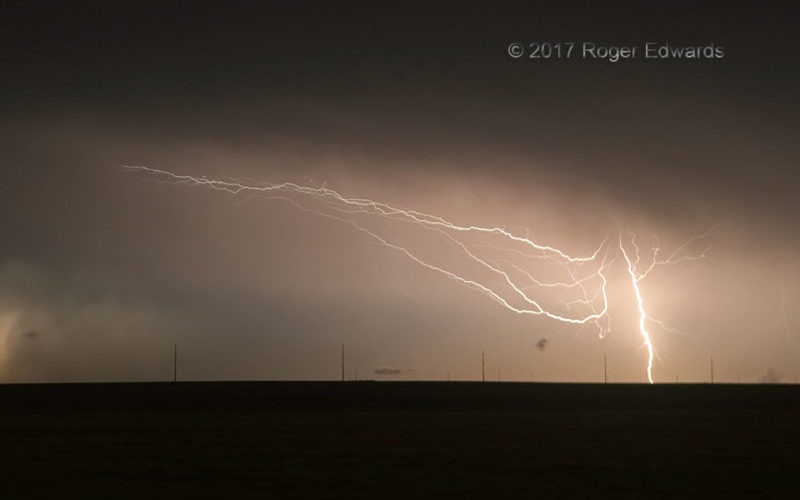The greenish core of a menacing HP (heavy-precipitation) supercell looms over the Texas High Plains, behind a ragged arcus cloud fronting the rear-flank core. To the right, a rotating wall cloud wraps up in a front-flank outflow notch. I almost never include people in shots on purpose, but an exception was worthwhile here. To the left, renowned storm observer and atmospheric scientist Dr. Chuck … [Read more...]
Sunset Sky Seeing Southward
The most photogenic and inspiring part of many a storm-observing day is after the storms have peaked and moved on: sunset time. Wildly wonderful to the west and easy on the eyes to the east, the sky was simply soothing to the south too, where backsheared anvil material and its mammatus, along with scuddy fractus clouds and midlevel altocumuli below, caught varying brilliances and tones of the … [Read more...]
Illuminated Multicell Structures
As often happens, this multicell thunderstorm began shooting lightning strokes every which way, out of the region where two cells interacted. One cell, just off the photo at left, was a prolific sparker in its own right; and the other created the big precipitation core in the middle to right background. New towers erupted over the boundary between the outflow of the two cells—the roll cloud at … [Read more...]
Memphis Rainbow
Rainbows right before sunset have the most vertical alignment possible from a ground-level view, but still are mildly tilted because of the sun's not being directly along or below the horizontal plane. [Contrast this with a mid-afternoon rainbow that is so tilted as to barely extend above the horizon.] The reddening of sunlight at this time of day, passing through nearly the longest possible … [Read more...]
Anvil “Zit”
Cloud-to-cloud and cloud-to-air lightning in the anvil region, close to a supercell's updraft, can be fast and furious. This unique breed of lightning, which is almost continuous much of the time, is observed almost exclusively with supercells. Lacking a formal name, the chaser slang "anvil zit" caught on in the 1980s as the most common term for this subspecies of lightning. This is not my … [Read more...]
Discharge Directional Differences
A single lightning discharge produced a fairly normal-looking cloud-to-ground flash, in the back side of a thunderstorm complex, and simultaneously, horizontal filaments flung many miles through light, trailing precipitation, just under the anvil. The reddish effect here is real, unlike with a lot of old film shooting. The lightning was distant, brought into closer view by zooming and cropping. … [Read more...]
- « Previous Page
- 1
- …
- 104
- 105
- 106
- 107
- 108
- …
- 386
- Next Page »





